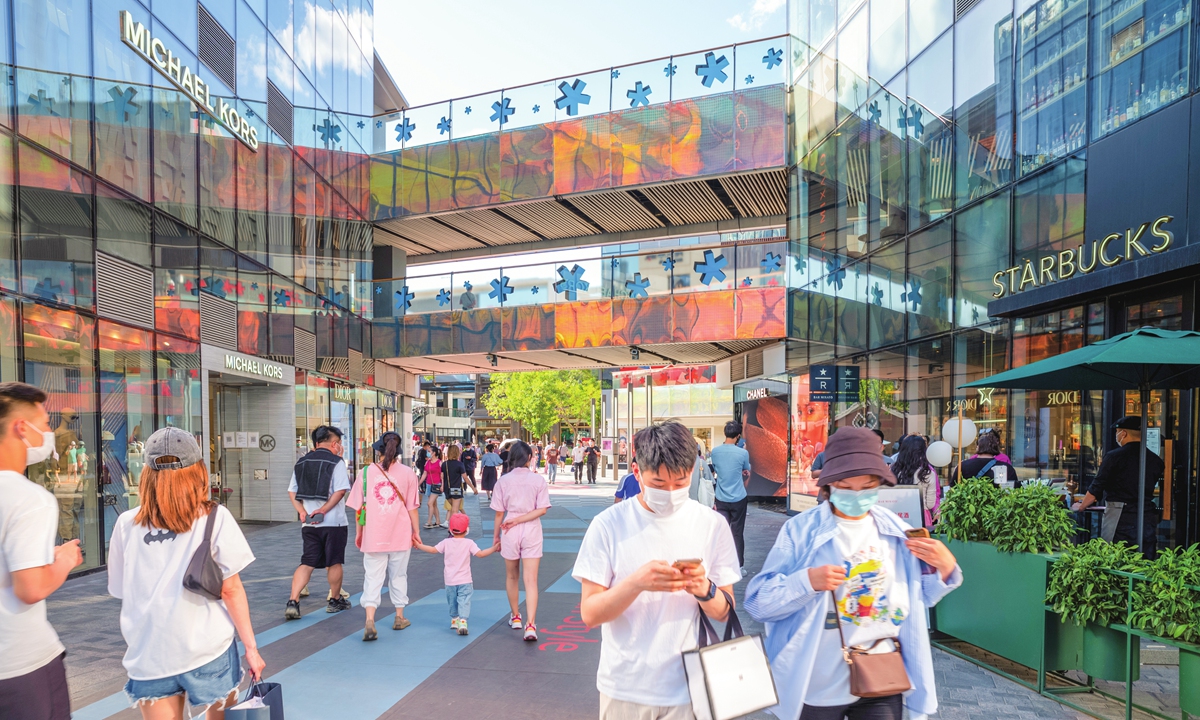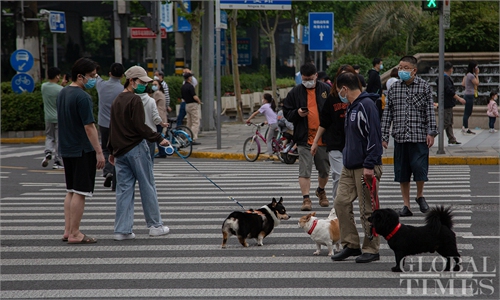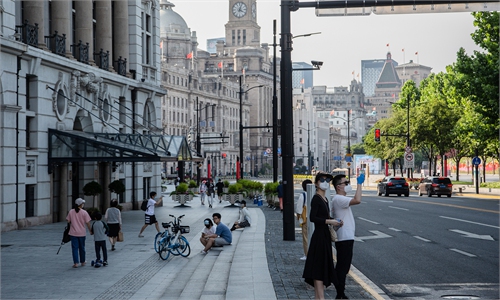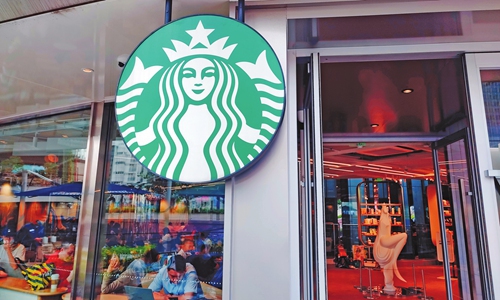Chinese cities poised to embrace upcoming festival; stimulus policies to yield positive results in 2022 H2
After a nearly three-month arduous battle, the Chinese mainland finally saw the daily tally of COVID-19 cases drop significantly, and Beijing and Shanghai edge toward full reopening. With cities gearing up to shake off the shadow cast by antivirus restrictions, accelerating production resumption and stimulating consumption, especially with the upcoming Dragon Boat Festival, concerns also emerged as to whether the loosening restrictions could trigger another outbreak.
The risk of another flare-up, according to epidemiologists, will always be hanging there in the near future. Yet the experience of dealing with Omicron, and tools such as nucleic acid test stations widely available in big cities, will enable China to detect the virus at a faster pace and to stanch it before evolving into a big epidemic, at minimal costs.
As Omicron subsides and cities push for economic recovery, especially after the resumption of the supply chain, economists predicted a V-shape recovery that third and fourth quarter GDP could bounce back to six or seven percent, and the strong momentum would extend into the first or second quarter of 2023.
Beijing and Shanghai both announced on Sunday they would ease part of their antivirus restrictions starting this week. The Chinese mainland recorded 20 confirmed locally transmitted COVID-19 cases and another 102 silent carriers on Sunday, with most of those having symptoms in Shanghai, Beijing and Tianjin. Sunday marks the fourth consecutive day when the daily tally of confirmed COVID-19 cases has dropped down to two digits.
Besides megacities, smaller cities like Linshui county in Southwest China's Sichuan Province also managed to contain its outbreak in 20 days and announced it would lower the risk level of local communities starting Sunday.
The last festival in the first half of the year, three-day Dragon Boat Festival, which falls on Friday, offers a "golden window opportunity" for COVID-hit cities to regain momentum. Authorities began to sell train tickets for the Dragon Boat Festival holiday on Monday. Domestic online travel platform Qunar revealed that almost 85 percent of travelers will confine their trips within their residential provinces. Provinces such as Guangdong, Zhejiang and Sichuan, where no major outbreak was reported, saw significant rise of train ticket booking.
Aside from consumers returning to shopping malls in Beijing and Shanghai, other local governments, such as Guiyang and Qingdao, are issuing vouchers in hopes of stimulating consumption during the holiday.
With strict antivirus measures in place, the possibility of another outbreak is slim, an anonymous expert from the Chinese Center for Disease Control and Prevention (CDC) told the Global Times. He believes that although Omicron is much more difficult to detect, and that the newer sub-variant brings along more risks, China is dealing with the new changes.
Beijing's experience in containing the new outbreak within 37 days shows speed is the key to stemming Omicron epidemic. "The set-up of 15-minute walking distance nucleic acid test centers in all major cities, and many public places requiring a valid negative test taken within 48 hours, help China to detect an outbreak more quickly. Another major outbreak, and a chaotic situation that occurred in Shanghai seems unlikely in the future," said the expert.

Shoppers walk through the re-opened Taikoo Li mall in Sanlitun, downtown Beijing on May 29, 2022. Major shopping malls in the city’s Chaoyang district announced they had reopened starting from Sunday morning, with anti-epidemic measures in place. Beijing has effectively brought the latest COVID-19 epidemic under control. Photo: IC
Strong bounce back
Many foreign media have hyped the economic shock brought about by antivirus measures in cities like Beijing and Shanghai. To downplay China's economic performance, some predicted China may fail to reach its growth target of 5.5 percent.
Chinese economists, however, predicted a strong rebound in the second half of the year.
Veteran Beijing-based economist Tian Yun told the Global Times on Monday that based on what he learned from multiple companies in the car industrial chain in Shanghai, Jiangsu and Jiangxi, many of them have started to resume production, while their manufacturing schedule for June is full. He learned from some Shanghai and Jiangsu-based factories that their employees' work resumption rate should be able to return to pre-pandemic levels by early June.
"From what I observed, many companies' real problem is not lack of orders, but interrupted supply chains. The latter problem has made some progress after the central government made repeated requests to smooth out logistics," Tian told the Global Times on Monday.
At a Sunday conference, Shanghai authorities said it will lift many conditions for businesses to resume work from Wednesday, to push forward the recovery.
The Ministry of Commerce said on Thursday it will roll out fresh measures to remove barriers in foreign trade and bolster the stability of its supply chains, and one of the measures will seek to alleviate the pressure of international logistics. The government will facilitate the smooth domestic transportation of foreign trade goods, and help COVID-affected foreign trade companies resume production as soon as possible.
Tian said that Beijing's lockdown of about a month could have a spillover effect on the Beijing-Tianjin-Hebei area. The area's GDP might slip by 30 percent in the second quarter, and will drive down China's Q2 GDP by 0.2-0.3 percentage points.
But he said that consequence of the closed-loop management should be milder on Beijing than on Shanghai, as Beijing's software information industry, which is a pillar of the city's economy, is relatively unaffected under measures like remote working.
Yet apart from Beijing and Shanghai, which underwent a short pause because of the outbreak, many other economic hubs remain unaffected. Take Shenzhen. The city witnessed consumption totals to 23 billion yuan ($3.43 billion) during the four-day Labor Day holiday, an uptick compared to last year.
Central and local governments have rolled out various stimulus policies. The State Council rolled out a 33-point package including 140 billion yuan in additional tax rebates and 300 billion yuan in railway construction bonds to support businesses and stimulate demand.
Last week, China's State Council also held what has been seen as an unprecedented national video teleconference which stressed the need to better implement measures to safeguard market entities, employment, people's livelihood and keep the economy operating in a reasonable range.
Chen Jia, a research fellow at the International Monetary Institute of the Renmin University of China, told the Global Times on Monday that since the recent stimulus policies will be implemented in the second and third quarter, chances are great that the economy will witness a robust rebound in the second half of 2022 compared to the first one, and intense GDP volatility during the two quarters will be unlikely, unless there are unexpected factors like a coronavirus resurgence or more serious external geopolitical tensions.
Tian also predicted that China's third quarter GDP should grow by more than 6 percent, while fourth quarter growth could stand at or surpass 7 percent. He also said that June will not only witness a trend of economic recovery compared to April and May, but will begin a long period of economic rebound that could extend into the first or second quarter of 2023.
Economists also cautioned that overseas media's downplaying of China's economy may not only aim at attacking China's image, but may be coordinating with some financial capital's movements on China's financial markets to get better windfalls.
On the other hand, foreign capital is continuing to flow into China despite the so-called gloomy outlook on China's economy. In April, the surplus of foreign exchange settlements and sales stood at $19 billion, similar to the average monthly level in the first quarter and higher than the corresponding period in 2021, data from the State Administration of Foreign Exchange showed.





